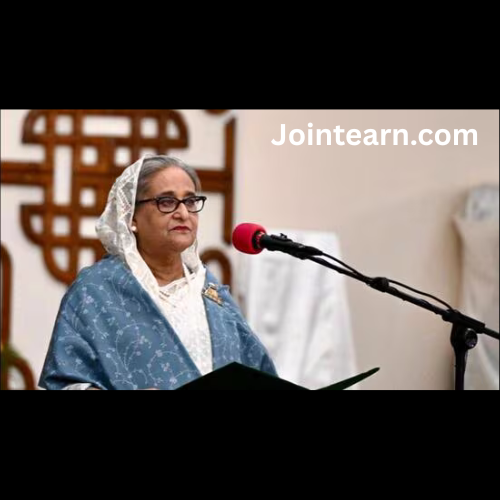In a significant political development ahead of the 2026 Assam assembly elections, seven opposition parties convened in Guwahati on Wednesday under the initiative of the Indian National Congress, marking the first major attempt in more than a year to construct a unified front against the Bharatiya Janata Party (BJP) and its allies. The meeting, long discussed but only now realised, signals an effort by disparate political groups to consolidate their strengths as they seek to challenge the formidable electoral machinery of chief minister Himanta Biswa Sarma’s government.
The meeting brought together representatives from the Congress, Raijor Dal, Assam Jatiya Parishad (AJP), the Communist Party of India (CPI), the Communist Party of India (Marxist), the Communist Party of India (Marxist–Leninist Liberation), and the Anchalik Gana Morcha. Collectively, these parties span a wide ideological spectrum, from mainstream centrist politics to regionalist and left-wing platforms. Their decision to sit together reflects a shared belief that the political climate in Assam demands a broader coalition to counter what they describe as the ruling party’s centralisation of power and alleged injustices.
One major absence was the All India United Democratic Front (AIUDF), led by Badruddin Ajmal, which has historically been a significant player in Assam’s opposition space. The AIUDF’s decision to stay out of the meeting raised immediate questions about the cohesion and practicality of forming a truly unified anti-BJP front. Although the Congress and the AIUDF have had a turbulent relationship in recent years, the absence of such a major regional force inevitably casts a shadow on the effectiveness of any emerging alliance.
At the conclusion of the meeting, Assam Congress chief Gaurav Gogoi addressed the media, emphasising the urgency and relevance of the gathering. He noted that the participating parties had been planning such a meeting for several months and that the discussions reaffirmed their shared objective of providing an alternative to what he described as the BJP government’s harassment and injustices under chief minister Himanta Biswa Sarma. Gogoi refrained from disclosing specific details about the internal deliberations or immediate next steps, instead emphasising that additional interactions would be held and that future developments would be shared progressively.
Other participants also expressed optimism about the potential of a united opposition front. Akhil Gogoi, the firebrand MLA from Raijor Dal who has built a reputation for grassroots activism, stated that the meeting marked an important beginning. He expressed confidence that opposition parties would enter the upcoming assembly polls as a united force and that such unity could unseat the ruling BJP. His sentiment was echoed by Lurinjyoti Gogoi, the president of the Assam Jatiya Parishad, who highlighted that the discussions had sent a strong message not only to the ruling party but to the people of Assam. He argued that the mere act of coming together demonstrated the opposition’s willingness to overcome differences for a broader political cause.
Despite the hopeful tone of the meeting, chief minister Himanta Biswa Sarma dismissed the initiative with characteristic sharpness. Speaking to reporters, Sarma derided the repeated attempts by the opposition to forge a coalition, likening their efforts to a television serial that cycles through the same predictable patterns. According to him, the opposition parties routinely meet, share pleasantries, and promise unity, only to later accuse each other of betrayal or ideological incompatibility. Sarma contrasted this behaviour with what he described as the unwavering coherence of the BJP and its National Democratic Alliance partners, who have remained united throughout successive electoral cycles in Assam.
The chief minister’s remarks draw attention to the opposition’s history of fragmentation, particularly their failed attempt to form a unified front before the 2024 Lok Sabha elections. At that time, although several parties expressed willingness to work together, they ultimately could not reach an agreement on candidate selection for Assam’s 14 parliamentary seats. The inability to field common candidates resulted not only in the collapse of the alliance but also in a divided opposition that struggled to mount a credible challenge to the BJP-led coalition.
This historical backdrop underscores the complexities involved in forming electoral alliances in a politically diverse state like Assam. With various parties representing distinct ethnic, linguistic, and ideological constituencies, building consensus requires delicate negotiation and compromise. The current effort led by the Congress must therefore overcome both political rivalry and a lack of trust that has accumulated over previous attempts.
Nevertheless, there are factors that may encourage cooperation this time. The 2026 assembly election will be the first major state election since the BJP’s most recent national-level performance and the changing dynamics within the Northeast. Some opposition leaders believe that voter dissatisfaction over issues like unemployment, inflation, ethnic tensions, and allegations of administrative overreach could potentially alter the political equation. For this reason, they argue that a united opposition is not just strategic but necessary to provide voters with a viable alternative.
The Congress, still the largest opposition party in the state, is working to reclaim its once-dominant position. However, it recognises that it cannot realistically challenge the BJP on its own. By taking the lead in convening the meeting, the party hopes to demonstrate its willingness to serve as a coordinating force among Assam’s various anti-BJP constituencies. Yet the absence of the AIUDF remains a significant hurdle, particularly because the Muslim vote in Assam is both demographically substantial and politically fragmented. Without some level of understanding between the Congress and the AIUDF, the vote share in several key constituencies could split, inadvertently benefiting the BJP.
For now, the opposition parties have framed their meeting as the beginning of a longer process rather than a definitive alliance. The success of future deliberations will depend on their ability to address hard questions related to seat-sharing, leadership, ideological positions, and constituency-specific concerns. Moreover, their ability to present a coherent narrative to the public will be critical. The BJP has consistently framed itself as a party of stability and decisive governance, while casting the opposition as disorganised and opportunistic. To counter this narrative, the opposition will need not only cooperation but also clarity of vision.
The Guwahati meeting marks an early but symbolically important step in what could become a major political realignment in Assam ahead of the 2026 polls. Whether this initial show of unity evolves into a functional and lasting coalition remains uncertain, but the conversation has begun, and the coming months will reveal whether these disparate political actors can overcome past failures and present a credible challenge to the BJP’s dominance in the state.


Leave a Reply